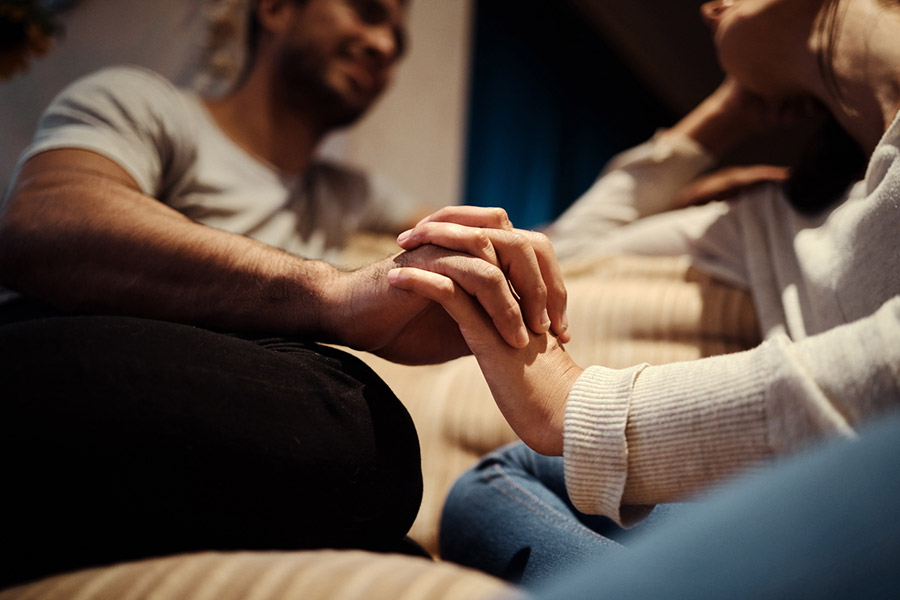Attachment styles play a significant role in how we form and maintain relationships. According to Levine and Heller (2010), there are 3 types of adult attachment styles: secure, anxious, and avoidant. As awareness of attachment theory continues to grow, people are often able to identify which attachment style they relate to; however, information about how to develop a secure attachment style in adulthood is often a little more elusive. In this blog post we’re going to explore how to move from an anxious attachment style towards more security.
Anxious attachment is characterized by a deep fear of abandonment and a constant need for reassurance in relationships. Individuals with this attachment style crave intimacy but often feel a deep sense of insecurity about their intimate relationships and their partner’s love for them. People with this attachment style are often extremely sensitive to small fluctuations in their partner’s mood, are typically more emotionally reactive, and are often highly alert for any signs of rejection. This can lead to negative interactions with significant others and can have a negative impact on one’s emotional well-being; however, with awareness and effort, individuals with an anxious attachment style can learn to develop more secure attachment, leading to healthier and more fulfilling relationships.
To become more secure, individuals with an anxious attachment style can take the following steps:
- Develop Self-Awareness: Recognizing and understanding your attachment style is the first step towards change. Reflect on past relationships throughout your life to identify patterns and triggers and ask yourself whether the anxious attachment style is consistent with your patterns of feelings and behaviours.
Understanding the root causes of anxious attachment is also important. Often, this style develops in response to inconsistent caregiving in childhood, where a child’s needs were sometimes met and sometimes ignored. As a result, they learn to hyper-focus on their relationships and seek constant validation to soothe their underlying fear of rejection.
It is also important to recognize the anxious thoughts and emotions that are coming up in your life currently and to start to understand the underlying triggers and patterns in your relationships. Greater awareness can help you respond more calmly and rationally in challenging situations, rather than reacting impulsively out of fear.
- Challenge Negative Beliefs: Anxious attachment is often fueled by negative beliefs about oneself and relationships. Challenge these beliefs by questioning the validity and exploring alternative perspectives. Try to consider at least 2-3 different explanations or ways to look at the negative beliefs when you notice them come up.
- Build Self-Esteem: Having a healthy sense of self-esteem outside of one’s relationship is another crucial aspect of becoming more securely attached. Anxious individuals often base their self-worth on external validation, particularly from their partners. Spend time investing in friendships and hobbies independent of your relationship that bring you joy and fulfillment and reflect on the things that you value about yourself that have nothing to do with your intimate partnership.
- Communication and Boundaries: Learning to communicate effectively is key in developing secure relationships. Anxious individuals often have difficulty expressing their needs and boundaries, leading to misunderstandings and conflicts. By practicing open and honest communication, you can build trust and intimacy with your partner, fostering a more secure attachment.
- Practice Mindfulness: Mindfulness can help you stay present and reduce anxiety. Practice techniques such as meditation, yoga, or deep breathing to cultivate a sense of calm and groundedness. This will help you recognize when you are triggered, which will give you time to choose how to respond, rather than react.
- Choose Your Partner Wisely: If you identify with the anxious attachment style and are not yet in an intimate relationship, it is important to be intentional if you choose to get into a romantic relationship. When someone who has an anxious attachment style dates someone who is avoidant, it often intensifies the symptoms of anxiety; however, when someone with an anxious attachment style is in a relationship with someone who has a secure attachment style, the anxieties and worries are often significantly reduced, particularly over time.
- You Don’t Have to Do This Alone: Therapy can be beneficial for individuals looking to overcome anxious attachment. The counsellors at Synergy can help you explore your attachment patterns, understand the underlying causes of your anxiety, and develop healthier coping mechanisms, boundaries, and communication skills.
If you are interested in accessing support at Synergy Counselling regarding your attachment style, contact us at admin@synergycounselling.ca or 250-314-0298 to find out more.

